India elections 2024: When were they, who could vote and why do they matter?
- Published
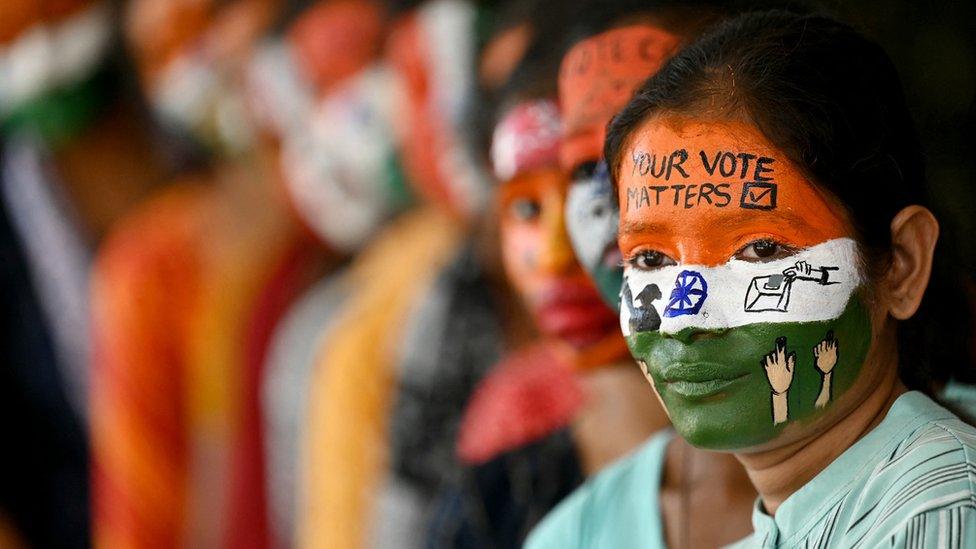
India's 2024 general election - which was held over six weeks between 19 April and 1 June - has been the biggest the world has ever seen.
Prime Minister Narendra Modi is hoping to win a third successive term, but opposition parties have said Indians face the loss of many freedoms if he stays in power.
What is the INDIA party?
The main challenge in 2024 comes from the Indian National Developmental Inclusive Alliance (India), a coalition of opposition parties including the once-dominant Congress party.
Key politicians in this group include Congress president Mallikarjun Kharge, as well as siblings Rahul and Priyanka Gandhi, whose father was the former Prime Minister Rajiv Gandhi.
Their mother, Sonia Gandhi, is a powerful opposition leader but is not expected to campaign as hard as she did in 2019.
Delhi's governing Aam Aadmi Party (AAP) is part of the coalition, along with several important regional parties.
Three AAP leaders have recently been arrested, accused of corruption. The party accuses Mr Modi and the BJP of conducting a political vendetta against it, which the BJP denies.
The alliance comprises more than two dozen parties in total.
What is the NDA?
The National Democratic Alliance (NDA) is a coalition of parties led by the BJP, and leans centre-right politically.
It was founded in 1998 and is currently in power in India.
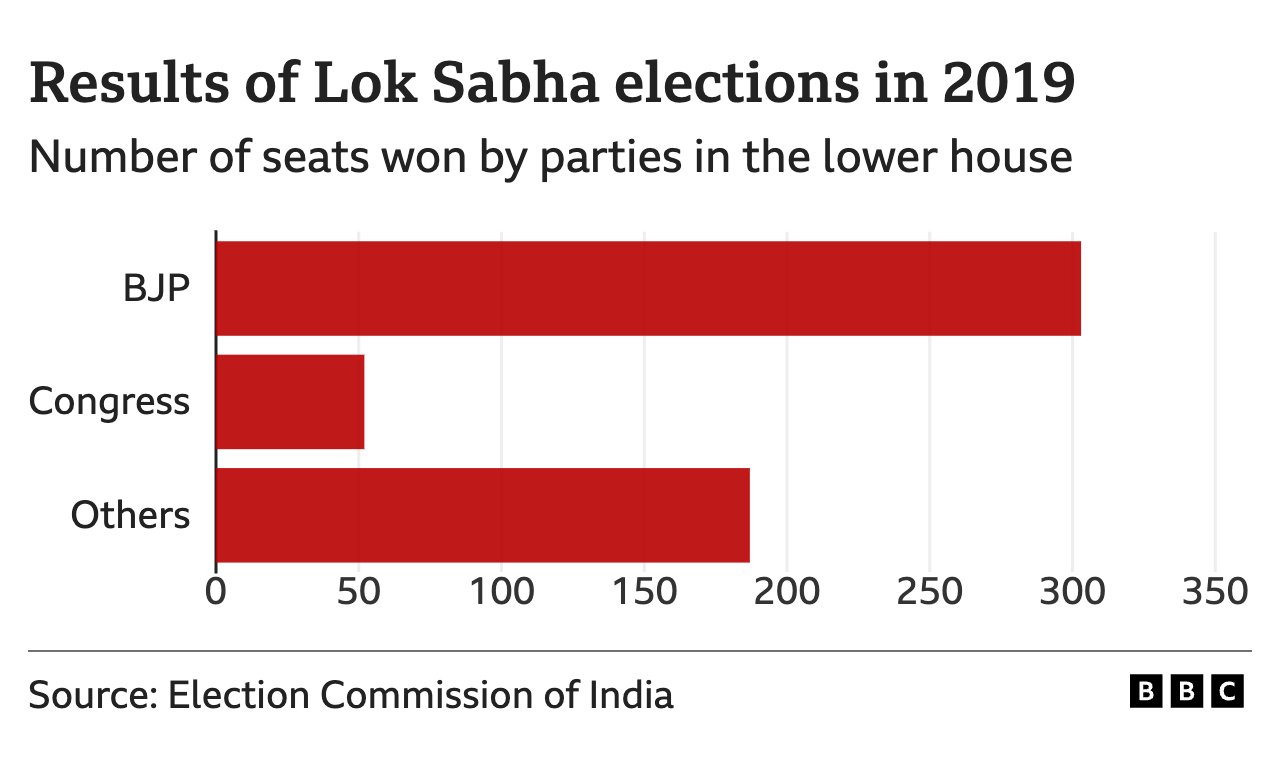
How many seats did BJP win in 2019?
In the 2019 election the BJP won 303 seats, and the NDA took 352 seats overall.
What were the key issues and why does the India general election matter?
Mr Modi can claim India's global standing has risen thanks to its growing economy and closer relations with the US, which wants India to be its ally against China.
He has recently introduced generous welfare schemes, such as providing free grain to 800 million of India's poorest, and a monthly stipend of 1,250 rupees ($16; £12) to women from low-income families.
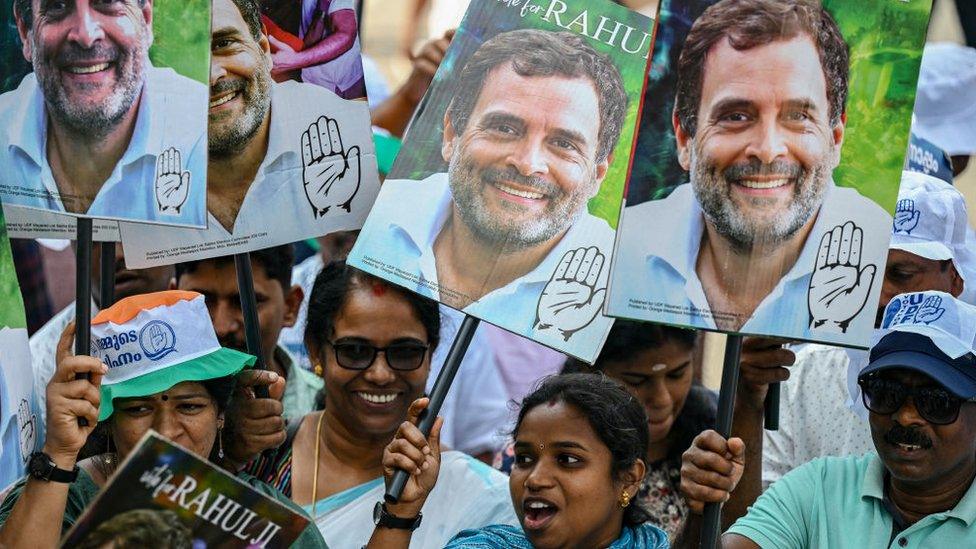
Rahul Gandhi is one of the leaders of the "India" coalition of parties challenging the BJP
In its manifesto Congress argued that unemployment remains high, external, especially for young people.
And it promised increased welfare payments for women, three million extra government jobs and more apprenticeships for college leavers.
It also promised that it would stop India's "slide into autocracy".
Minority groups say that they often face discrimination and attacks, and have been forced to live as "second-class" citizens under Mr Modi's rule - an allegation the BJP denies.
The campaign group for international civil liberties, Freedom House, says that journalists and others who question the BJP government have increasingly been harassed, external. It classifies India as only "partly free".
What were the dates of the polling days, and why does voting take so long?
Voting took place in different parts of India on seven polling days: 19 April, 26 April, 7 May, 13 May, 20 May, 25 May and 1 June.
The results are announced on 4 June.
Voting was staggered to enable security staff to guard polling stations across the country.
Millions of electronic voting machines have been used, which let people choose between candidates or pick "none of the above".
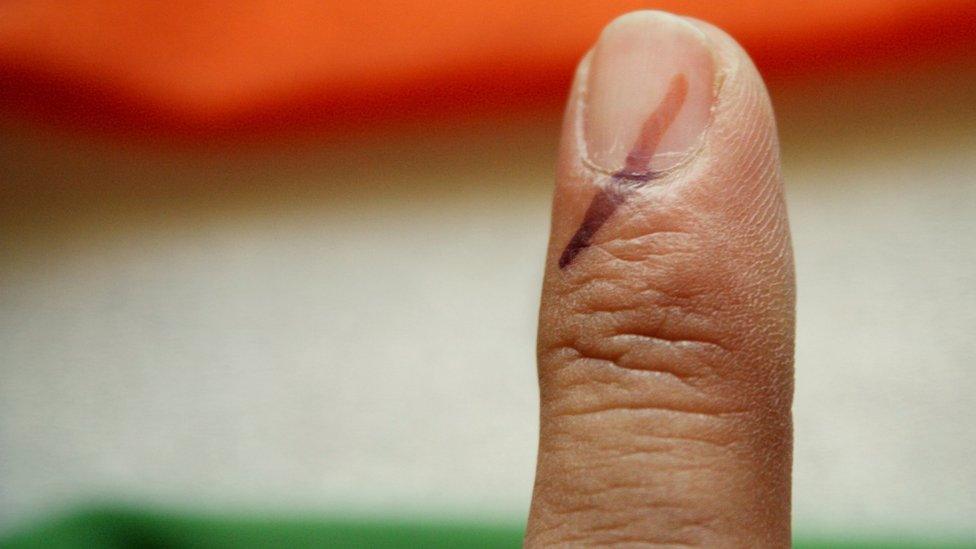
After people cast their ballots, they were marked with indelible ink to prevent them voting again.
The ink stains the skin and fingernails purple when exposed to sunlight, stays on for about two weeks and is almost impossible to remove.
How many seats are needed to form a government?
There are a total of 543 seats in the parliament, so a party or alliance needs more than 272 seats to form government.
The Lok Sabha chooses the prime minister, who in turns chooses government ministers.
Who can vote in elections for the Lok Sabha?
India is the world's most populous country, with 1.4 billion inhabitants, and 969 million of them have been able vote in this year's election - roughly one in eight of the global population.
Voters must be Indian citizens, 18 years of age or older and be on the electoral register, external. They also need valid voter ID cards.
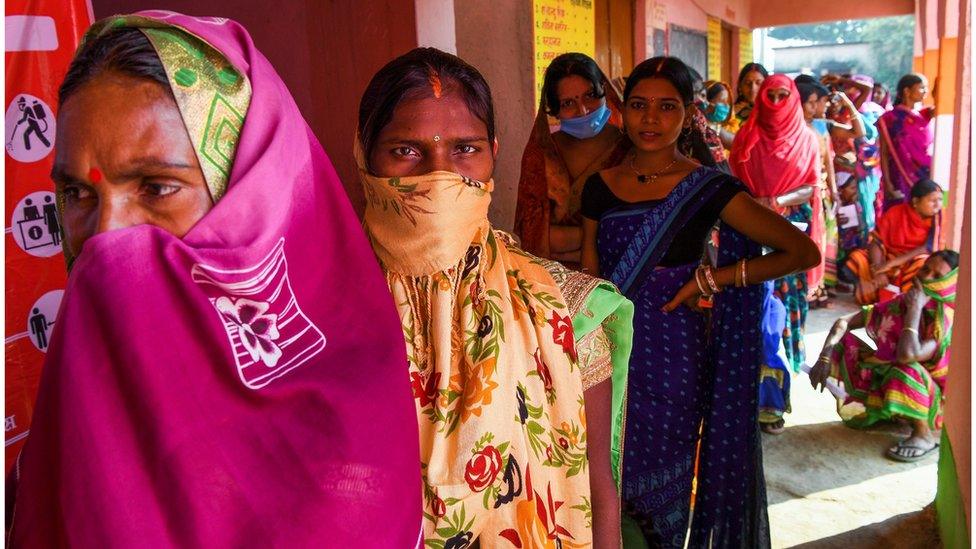
969 million people are eligible to vote in India's 2024 general election
The 13.4 million Indian citizens who live abroad, external are also eligible to vote, but they would have been required to register and return to India to do so.
Members of the Lok Sabha are elected for a five-year term to represent a single constituency, the winner being the candidate with the most votes.
There are 131 seats reserved for MPs from so-called "scheduled castes" and "scheduled tribes", external. These are groups officially recognised as disadvantaged, and make up about a quarter of India's population.
India has also passed a law to allocate a third of the seats to women, but this will not come into force for several years.
How are all the votes collected across India?
Your device may not support this visualisation
India is 1.3 million sq miles (3.3 million sq km) in area, and electoral rules say there must be a polling booth close to every human habitation.
The 2019 elections had a polling booth in a remote forest area of the Gir National Park in Gujarat for the one man living there, external.
In the 2024 elections, officials were required to trek 24 miles (39km), external to a village in Arunachal Pradesh state in north-east India, to collect the vote of a single female voter.
